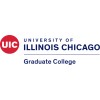
Reduced-Intensity Conditioning Before Donor Stem Cell Transplant in Treating Patients With High-Risk...
Acute Myeloid Leukemia With FLT3/ITD MutationAcute Myeloid Leukemia With Gene Mutations21 moreThis phase II trial studies reduced-intensity conditioning before donor stem cell transplant in treating patients with high-risk hematologic malignancies. Giving low-doses of chemotherapy and total-body irradiation before a donor stem cell transplant helps stop the growth of cancer cells. It may also stop the patient's immune system from rejecting the donor's stem cells. The donated stem cells may replace the patient's immune cells and help destroy any remaining cancer cells (graft-versus-tumor effect). Giving an infusion of the donor's T cells (donor lymphocyte infusion) before the transplant may help increase this effect.

Rituximab Plus Lenalidomide for Patients With Relapsed / Refractory Indolent Non-Hodgkin's Lymphoma...
LymphomaNon-HodgkinThis double-blind randomized, parallel group study will evaluate the efficacy and safety of lenalidomide (Revlimid, CC-5013) in combination with rituximab (MabThera/Rituxan) in patients with relapsed or refractory follicular lymphoma or marginal zone lymphoma. Patients will be randomized to receive either lenalidomide or placebo for twelve 28-day cycles in combination with rituximab. Anticipated time on study treatment is 1 year.

A Phase 1 Multiple Ascending Dose Study of Milademetan in Subjects With Advanced Solid Tumors or...
Advanced Solid TumorLymphomaThis will be a Phase 1, open-label study of milademetan to assess its safety and tolerability, identify a maximum tolerated dose (MTD)/tentative recommended phase 2 dose (RP2D), and assess its pharmacokinetic (PK)/ pharmacodynamic (PDy) properties in participants with advanced solid tumors or lymphomas. Approximately 5 US sites are planned for Part 1 (Dose Escalation) and Part 2 (Dose Expansion). The same sites are planned to participate for both parts.

CD5789 in Early Cutaneous T-Cell Lymphoma (CTCL)
LymphomaThe goal of this clinical research study is to learn if CD5789 is safe and tolerable when given to patients with early stage CTCL. CD5789 is designed to attach to tumor cells and change their genetic material. This may stop the growth of the tumor cells.

Cyclophosphamide, Doxorubicin, Vincristine, Prednisone, Rituximab Pateinets With Aggresive NHL
LymphomaNon Hodgkin's LymphomaWe now propose to investigate the combination of CHOP-Rituxan plus PEG-Filgrastim (PEG-filgrastim) and GM-CSF. PEG-Filgrastim would be given in order to allow us to administer the chemotherapy courses every 2 weeks with the practical advantage of requiring only one dose of PEG-filgrastim instead of daily doses of G-CSF.

Global Phase1 Study to Assess the Safety and Tolerability of AZD1208 in Advanced Solid Tumors and...
Advanced Solid MalignanciesMalignant LymphomaThe purpose of this study is to investigate the safety and tolerability of AZD 1208 up to a maximum tolerated dose (MTD) and define the dose(s) for further clinical evaluation when given daily to patients with advanced solid malignancies including malignant lymphoma

Therapeutic Effects of Epstein-Barr Virus Immune T-Lymphocytes Derived From a Normal HLA-Compatible...
EBV-induced LymphomasEBV-associated Malignancies1 moreThis is a Phase II trial to evaluate the efficacy and safety of human leukocyte antigen (HLA) partially-matched third-party allogeneic Epstein-Barr virus cytotoxic T lymphocytes (EBV-CTLs) for the treatment of EBV-induced lymphomas and EBV-associated malignancies.

Fludarabine Based Conditioning for Allogeneic Transplantation for Advanced Hematologic Malignancies...
Acute Myeloid LeukemiaAcute Leukemia9 moreNew conditioning regimens are still needed to maximize efficacy and limit treatment-related deaths of allogeneic transplantation for advanced hematologic malignancies. Over the past several years, the investigators have evaluated several new conditioning regimens that incorporate fludarabine, a novel immunosuppressant that has limited toxicity and that has synergistic activity with alkylating agents. Recent data have suggested that fludarabine may be used in combination with standard doses of oral or IV busulfan, thus reducing the toxicity previously observed with cyclophosphamide/ busulfan regimens.

Allogeneic Transplantation Using Timed Sequential Busulfan and Fludarabine Conditioning
LeukemiaAcute Myeloid Leukemia8 moreThe goal of this clinical research study is to learn if giving busulfan and fludarabine before a stem cell transplant can help control the disease better than the standard method in patients with leukemia, lymphoma, multiple myeloma, MDS, or MPD. In this study, 2 doses of busulfan will be given 2 weeks before a stem cell transplant followed by 4 doses of busulfan and fludarabine during the week before the stem cell transplant, rather than the standard method of giving 4 doses of busulfan and fludarabine only during the week before the stem cell transplant. The safety of this combination therapy will also be studied. Busulfan is designed to kill cancer cells by binding to DNA (the genetic material of cells), which may cause cancer cells to die. Busulfan is commonly used in stem cell transplants. Fludarabine is designed to interfere with the DNA of cancer cells, which may cause the cancer cells to die.

Targeted BEACOPP Variants in Patients With Newly Diagnosed Advanced Classical Hodgkin Lymphoma
Hodgkin LymphomaThe Purpose of this trial is: to determine complete response rate (CRR) after six cycles of chemotherapy to determine complete remission rate (CR/CRr) as final treatment outcome after completion of treatment
